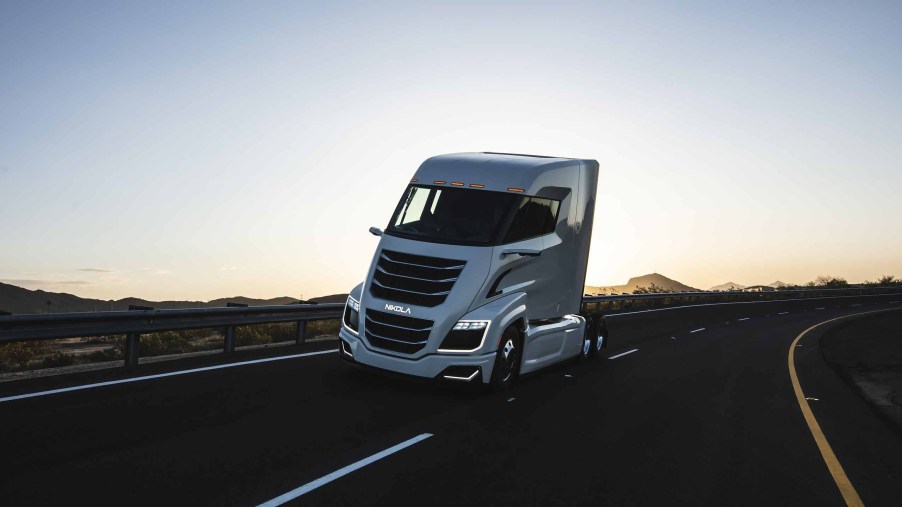
Nikola Motors’ Hydrogen Semi-Trucks Are One Step Closer to Production
Although they have some advantages over battery-powered EVs, hydrogen fuel-cell vehicles still have a ways to go. And a lot of their issues, especially with semi-trucks, is down to access. EV fast chargers are still not ubiquitous—hydrogen refueling stations are even rarer. Really, California is the only place in the US where they work. However, that hasn’t stopped Nikola Motors from pursuing the technology, alongside battery-powered electric trucks. And recent developments may help the company speed hydrogen truck production along.
Nikola Motors is going public
In March 2020, Nikola Motors announced that it would merge with VectoIQ Acquisition Corp. Alongside a slight name-change (to Nikola Corporation), the company itself would go from a privately-owned company to a publicly-traded one. VectoIQ, which The Motley Fool reports is headed by former GM Vice Chairman Stephen Girsky, is already listed on the stock exchange. But in the 2nd quarter of 2020, its stock will become Nikola stock. $525 million of new stock options will also be added to the market.
In the meantime, Nikola Motors has drawn some ire, CNBC reports, for receiving funds from the COVID-19 PPP small business fund. The merger would put Nikola at a market valuation of $3.3 billion.
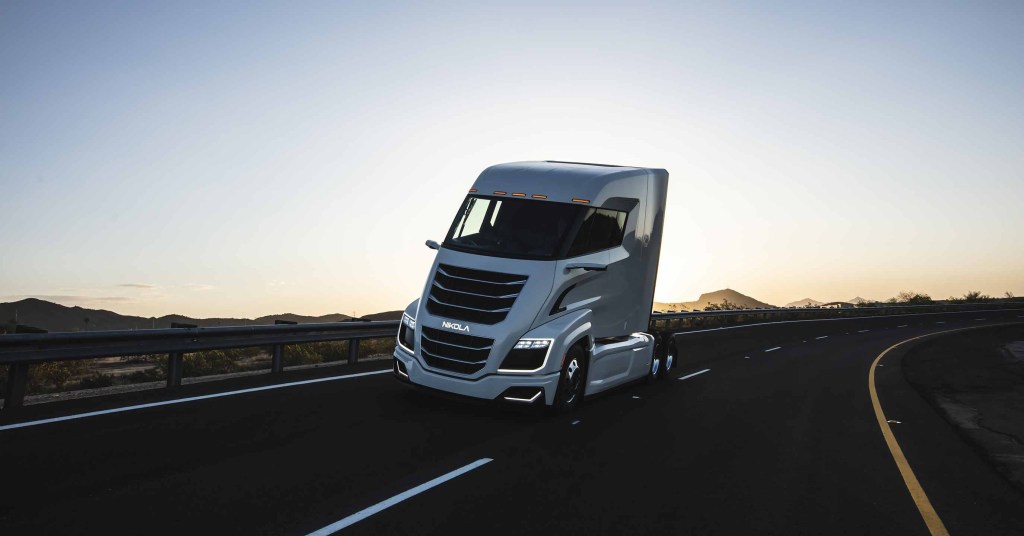
However, in an interview, company CEO Trevor Milton explained that until the merger’s complete, Nikola Motors is still privately-owned. The $4.1 million is earmarked for the company’s 300 employees. In addition, although estimates put Nikola’s value at $3.3 billion, the company itself doesn’t actually have that kind of cash on hand. And potential revenue estimates are based on 2.5 years of production.
That’s a production which, The Motley Fool notes, hasn’t yet fully started up. However, the funding and merger should allow Nikola Motors to do just that.
The company’s hydrogen truck plans
Part of the reason why Nikola Motors needs the investment is to fulfill the order Anheuser-Busch has placed. A Nikola hydrogen-powered electric semi has been a part of Anheuser-Busch’s delivery fleet for about 6 months now. It’s been so well received, the beer company placed an order for 800 more, Roadshow reports. That’s on top of additional orders courtesy of its joint-venture partner, European industrial vehicle manufacturer IVECO.
That’s why some of the funds from the merger and stock sale are for building a full-scale production facility in Coolidge, Arizona. And, to keep the hydrogen-powered semis running, Nikola Motors will also build additional hydrogen refueling stations. At the moment, there are only 42 in the entire US, according to the US Department of Energy. And all but 2 are in California. Nikola plans to add 700. However, the hydrogen semi-truck production and refueling stations won’t start going online until 2024.
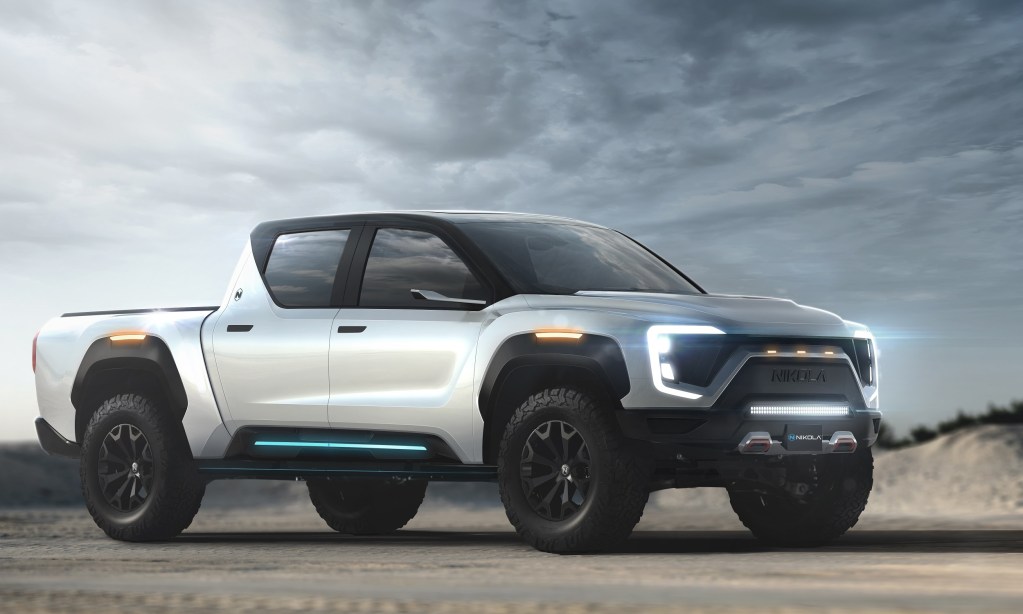
In the meantime, the rest of the funds will help Nikola produce its hydrogen-and-battery-powered Badger pickup truck. Because the Badger isn’t solely dependent on hydrogen stations and isn’t a Class 8 commercial vehicle, it’ll reach more customers. In fact, starting in 2021, it’s projected to be Nikola Motors’ primary revenue source. At least until the hydrogen-powered semis start rolling out the door.
These are all ambitious plans.
Potential complications and competitors
Currently, hydrogen requires much more energy to produce than electricity. Then it’s compressed into liquid form, using more energy. Boil-off during transit adds to the energy loss. However, Motor Trend reports there might be ways of reducing the cost by supplementing it with on-site production. That would also resolve some of the frequent hydrogen shortages that occur at these stations, Autoweek reports.
Another potential hang-up could be future battery developments. At the moment, hydrogen’s biggest advantage over lithium-ion batteries is energy density. Hydrogen packs 3 times as much energy into the same mass as Li-ion. That’s what limits EV battery pack size: more batteries mean more range, but also more weight, which brings range down. However, if more energy-dense chemistries are developed, or more fast-charging stations get built, the range becomes a non-issue.
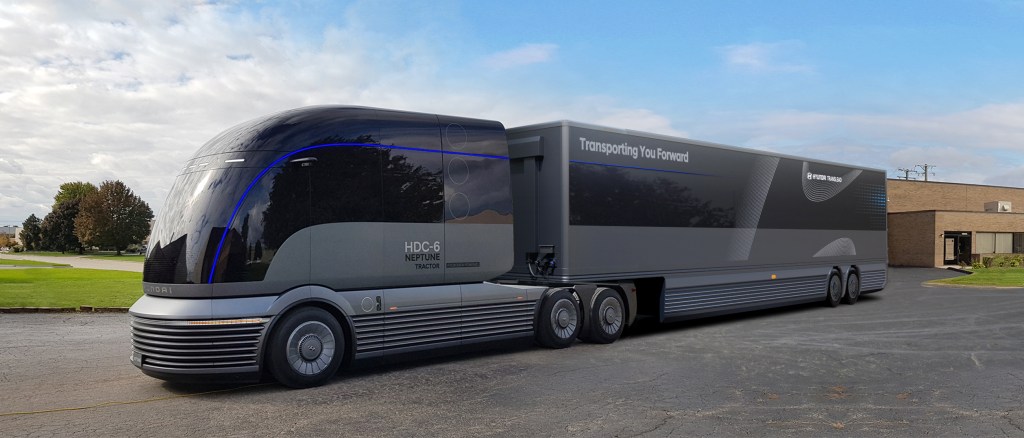
A potentially bigger problem for Nikola Motors, though, is the competition. Hyundai has its own hydrogen-powered semi concept, which it’s developing with the help of Cummins. Famed engine producer Cummins is making its own proof-of-concept hydrogen-powered semi, too.
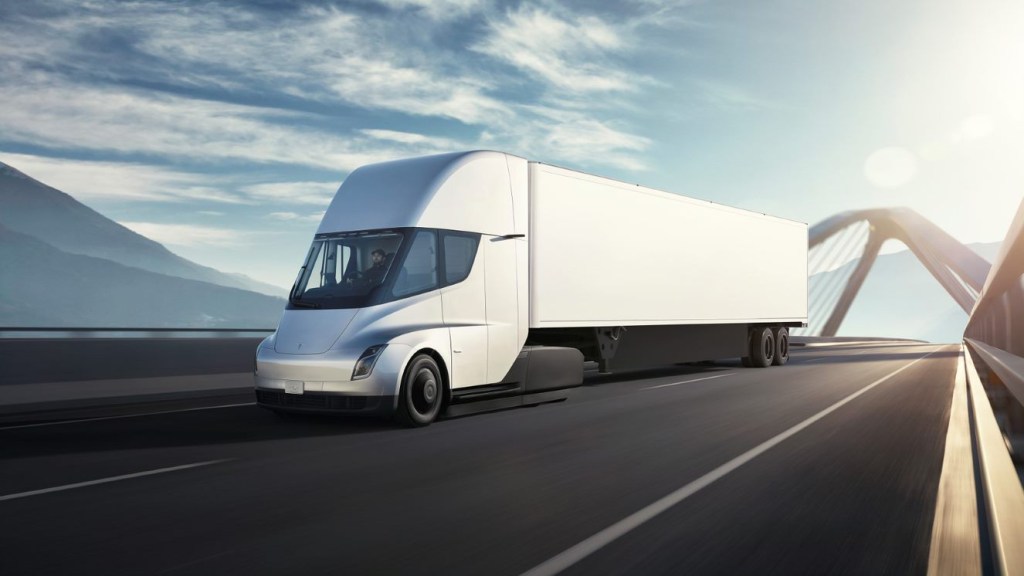
Then there’s Tesla. Or rather, there might be Tesla. Tesla introduced a battery-powered electric semi some time ago. However, very little new information has come out about the Tesla Semi since. With the current turmoil over Tesla’s production facility, it’s possible the Tesla Semi plans have been postponed indefinitely.
At the very least, though, Nikola Motors is showing there’s still room for an alternate take on the electric future.
Follow more updates from MotorBiscuit on our Facebook page.


